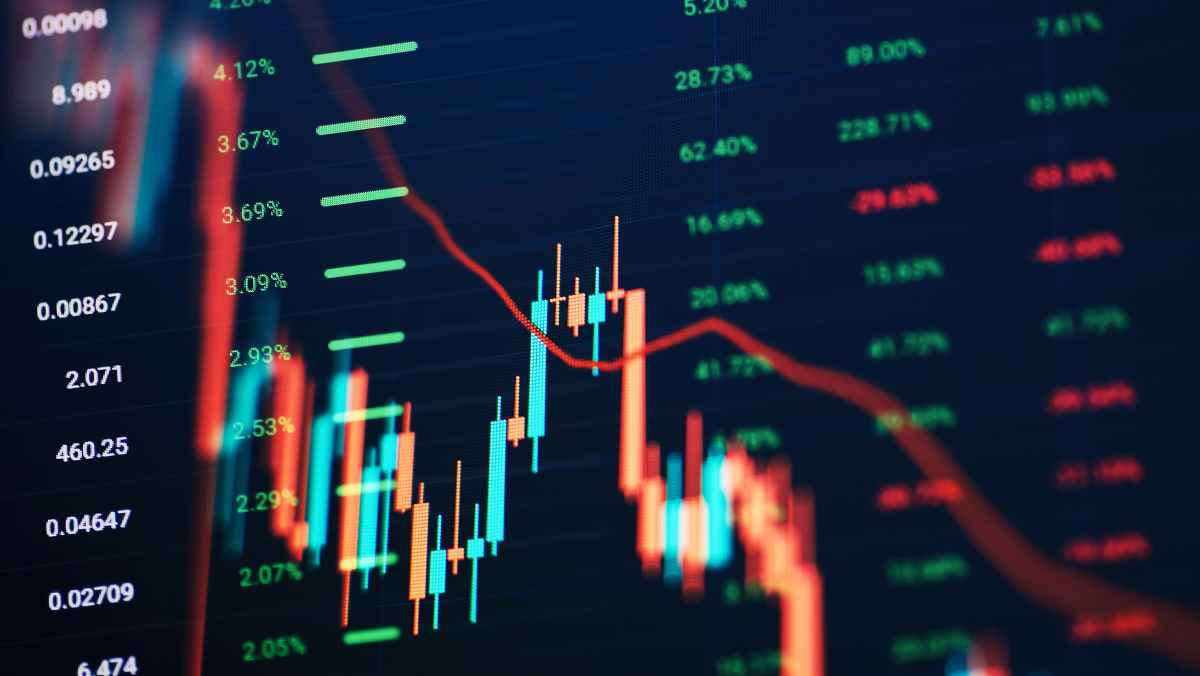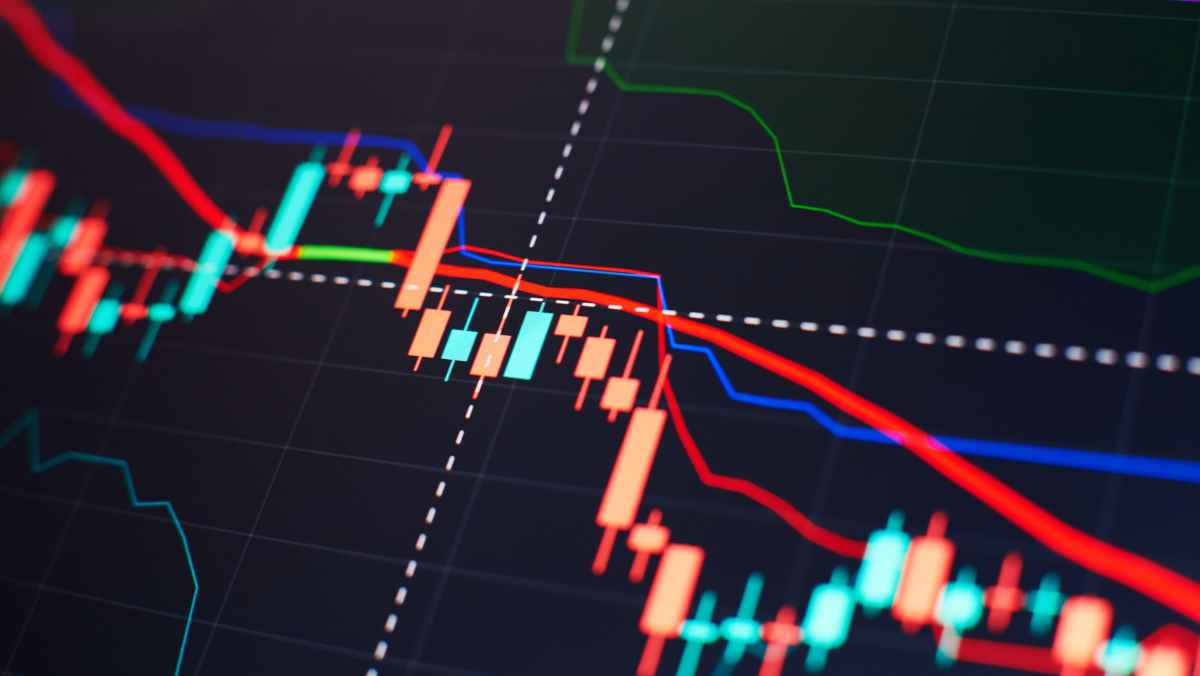Tuesday Dec 5 2023 11:41

11 min

The parabolic SAR, or “stop and reverse,” indicator was developed in the late 1970s by commodity trader Welles Wilder. Though not known by every beginner trader today, understanding this tool can significantly benefit those looking to identify turns in trends.
In this article, you’ll learn the exact logic behind how parabolic SAR works, including specifics on the calculations driving it. We’ll also explore strengths and weaknesses - such as excelling in trending conditions but struggling during ranging choppy markets.
The parabolic SAR (stop and reverse) is a technical indicator used in financial markets to identify potential reversals in the price direction of an asset. It was developed by famed commodity trader J. Welles Wilder Jr. as part of his series of new analytical tools for traders.
Wilder was looking for a way to systematically identify when trends were potentially reversing in commodities markets. He found that while existing momentum oscillators like the Relative Strength Index (RSI) could identify overbought and oversold levels, they did not capture trend reversals very well.
The parabolic SAR aimed to address this gap. The indicator is shown on price charts as a series of dots, either above or below the price bars, representing potential stop and reverse points.
The parabolic SAR has a very unique construction. As a new uptrend starts, the SAR dot is placed below the price bars. As the uptrend extends, the SAR dot moves progressively higher.
The SAR dot will continue to rise as long as the uptrend is intact. However, the first time the price bar moves lower than the SAR dot, this signals the uptrend has reversed. The SAR dot then moves below the price bars, showing the new downtrend.

The SAR recalibrates whenever a reversal takes place. It will shift from below to above the price bars again when a new uptrend begins. This dynamic adjustment is why the indicator forms a parabolic curve whenever plotted on a price chart.
The mathematics behind the SAR calculation involve factors like the acceleration factor, maximum AF, and SAR reversal. However, traders using it can be able to understand the complex formulas. They just need to interpret the changing position of the SAR dots.
You might also like to read: What Is CFD Trading?
The SAR indicator plots a trailing dot above or below an asset’s price bars. The dynamic location shifts in response to price moves. But how does it decide precisely where to place the SAR dot at any given moment?
The calculation involves two key variables:
The SAR algorithm starts with a baseline “step” value, generally set to 0.02. As soon as a price bar moves to the other side of the dot, this triggers an “acceleration.”
The following placement of the SAR dot will use the current step multiplied by an acceleration factor (AF). The standard AF setting is 0.02, but it compounds rapidly afterward. Each additional reversal causes the AF to grow larger, making the SAR dot placement increasingly sensitive.
The other decision point is whether to situate the SAR dot above or below the price bars. When bars make new highs, the dot shifts below to reflect an uptrend. When a lower low forms, the SAR flips above the price to signal downtrend conditions.
This dynamic adjustment means SAR trails prices relatively closely. The dot will remain either above or below the price bars for sustained runs higher or lower. But the moment a reversal forms, the dot quickly flips to the other side in response.
Check this article about: What Is Price Slippage?
The parabolic SAR is an excellent trend-following indicator when used correctly. It performs the function of objectively identifying potential reversals very well.
However, like with any indicator, there are some limitations. The parabolic SAR is a lagging indicator. It will constantly shift after a trend reversal has started, not before. The formula needs the new price data to trigger the change.
The lag factor does mean traders will often experience some whipsaw. There can be several false signals where the SAR flips, but then the price quickly resumes the prior trend direction. So, filters are needed to reduce unnecessary trading triggered by the lag.
It performs better for some assets than others. The SAR handles trending markets nicely, like commodities, indices, and forex pairs. However, the constant trend shifting can result in more false signals for choppy stocks or cryptocurrencies.
For trend traders, monitoring the parabolic SAR dots flipping from below to above the price bars (and vice versa) provides an excellent method for objectively identifying early reversals. It can significantly improve trading performance when combined with other indicators like moving averages and only taking high-probability signals.
The SuperTrend indicator is also very popular for identifying trends and reversals. Like the parabolic SAR, the SuperTrend will plot a line above and below the price bars to signal uptrends and downtrends.
The difference between the two indicators lies in their construction and sensitivity. The SuperTrend line is based on calculations involving the Average True Range and current close price data. The formulas smooth out the line so there are fewer false signals.
The parabolic SAR dots, however, move more directly with the current price. This makes the SAR quicker to signal potential reversals. The SuperTrend line will shift after a more significant price movement occurs because of the smoothing effect.
This means the SuperTrend is slower to react to reversals. It will avoid more false signals but also has greater lag. The SAR gives earlier warnings but will whipsaw more often. Many traders combine both indicators. The SAR may flash an initial warning of a potential trend change. But they will also wait for confirmation from the SuperTrend line flipping before entering a trade.
Using the two together provides balance. The SAR gives early heads up of reversals, but then the SuperTrend filters out weaker signals for fewer false alarms. This tag team approach combines responsiveness with increased accuracy.
Expand your knowledge with this write-up: What Is A Trading Indicator And How It Helps You As A Trader
The SAR indicator performs best when markets begin trending strongly in one primary direction for an extended period. In these conditions, SAR helps confirm an emerging trend by flipping early. It then continues trailing along with limited whipsaws until the movement eventually reverses.
Trend traders aiming to capture long directional moves can use SAR signals to help time optimal entry and exit points. The early warnings of trend reversals are extremely valuable for this trading style.
However, SAR struggles when prices move sideways with no clear directional bias. Choppy, volatile markets will result in the SAR dot flipping back and forth repeatedly. This generates far more false signals and fake-out whipsaw trades.
Range-bound and sideways price action is the flaw of SAR. Trendless volatility causes the sensitivity and acceleration factor to work against traders. The tool ends up doing more harm than good in these kinds of conditions.
Read this article for more insights: What Is A Bearish Market?
The parabolic SAR indicator, developed by Welles Wilder in the late 1970s, aims to help traders systematically identify trend reversals. It plots a trailing dot either above or below an asset’s price bars, shifting when a reversal is detected.
For trend traders, early warnings of trend shifts provide high value. Parabolic SAR helps confirm emerging trends and can identify optimal exit points—however, the tool struggles during range bound and choppy price action. Too much false signal whipsaw can occur.
There is no singular perfect indicator working flawlessly in all market conditions. SAR has its strengths and weaknesses like any other trading tool. Experienced traders understand this fact. They take time studying a variety of indicators and analytical techniques, becoming knowledgeable about scenarios when each works best or poorly.
If you want to enhance your trading skills, rest assured that markets.com has provided abundant educational resources. Whether you’re just starting or are an experienced trader, you’ll find a wide range of informative materials to help take your trading to the next level.
From basic trading concepts to advanced technical analysis webinars, markets.com offers expert insights you can access anytime, anywhere - 24/7. With these resources, you can sharpen your trading strategies and stay up-to-date on the latest market trends and developments.
We also encourage traders of all skill levels to open a risk-free demo account with markets.com. Our state-of-the-art web and mobile platforms allow you to get hands-on practice using moving averages and other indicators. Refining your approach through virtual trading builds confidence and readiness before trading real capital.
Committed to transparency and service, we support clients so they can advance trading pursuits wisely. Join markets.com to unlock a robust ecosystem catered to elevating your success through ongoing learning and trading.
“When considering “CFDs” for trading and price predictions, remember that trading CFDs involves a significant degree of risk and could result in capital loss. Past performance is not indicative of any future results. This information is provided for informative purposes only and should not be considered investment advice.”